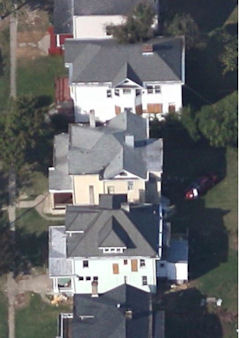by James A. Bacon
Mirroring national trends, poverty in Richmond region suburbs has grown far more rapidly since 2000 in suburban counties than in the City of Richmond, according to the Richmond Times-Dispatch, reporting numbers published in a new book, “Confronting Suburban Poverty in America.”
Writes the T-D’s Graham Moomaw: “From 2000 to 2011, the number of poor people in Richmond-area cities grew by 30.5 percent, while the number of poor in the suburbs grew by 69.8 percent, according to the study.”
The poverty rate still remains roughly three times higher in the city compared to outlying counties (which the T-D did not identify, but presumably include Henrico, Chesterfield and Hanover). But the shift marks a dramatic change since the 1970s and 80s when poverty was a negligible problem in the Richmond region’s fast-growth counties.
Here’s the larger and more significant point, which the T-D did not make: There is no evidence that the shift in poverty from city to suburbs is slowing. Indeed, I would go so far as to suggest that there is a tipping point at which the shift will accelerate, and that it is possible that the poverty rate — and all the drawbacks associated with it, such as crime, social dysfunction, problems in schools, higher tax burdens — will be worse in the suburbs than the city 20 to 30 years from now.
Several factors are driving this reversal. First is continued gentrification in Richmond, similar to the trends we see in Washington, D.C., and other major cities, in which more affluent households move back into the city to be closer to job centers, cultural amenities and walkable neighborhoods. (Gaining proximity to mass transit is not, in my estimation, much of a motivator for affluent Richmonders.) The dramatic decline in the crime rate makes people far more comfortable living in the city than they once did. The poor quality of schools, especially middle schools, and higher tax rate still remain deterrents — but that could change in time.
Meanwhile, poor people are leaking into the suburbs — typically into unwalkable, lower-density neighborhoods that the middle and professional classes no longer find desirable. Unlike older city neighborhoods, with houses set on smaller lots within walking distance of retail, these older suburban tracts offer nothing to the affluent home buyer. Because their owners have been unwilling to reinvest in them, they have deteriorated and lost value. The poor are the only people willing to move into them now.
So, Henrico and Chesterfield now find themselves dealing with the problems associated with poverty — higher levels of crime (though down from the peak), social dysfunction and disruptive kids in school. Now, just like in the city, there are dicey districts in the counties where public safety is an issue. Now there are schools in the county to which affluent households avoid sending their kids. Now counties have to share in the fiscal burden of dealing with poverty.
As I have argued elsewhere, human settlement patterns in the City of Richmond are inherently more fiscally efficient to maintain and replace than the scattered, disconnected, low-density settlement patterns of the outlying counties. That differential was masked while Richmond was coping with a 19th-century sewer-storm water system and the counties were basking in the newness of their infrastructure. But now, counties have aging infrastructure, too. At some point, a strengthening tax base in the city and an eroding tax base in the counties will be reflected in a shrinking tax differential between the two. When city taxes are no higher than county taxes, poof, there goes another reason to live in the counties.
When it comes to the distribution of poverty, the Richmond metropolitan area will be barely recognizable 20 to 30 years from now. The authors of “Confronting Suburban Poverty in America” fret that suburban counties are not prepared. They lack the soft infrastructure of governmental and not-for-profit social services, and poor households residing in the auto-dependent suburbs will be even more isolated than their counterparts in the city, who at least have access to mass transit.
To some people, the year 2043 might sound like the far-distant future. But the far-distant future has a way of arriving with frightening speed.



